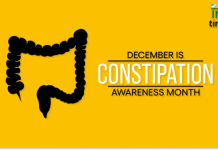
Every November, Lung Cancer Awareness Month serves as a time to educate the public, foster understanding, and unite in the fight against one of the world’s deadliest cancers. Lung cancer is a major global health concern, affecting millions of people each year and accounting for the highest number of cancer-related deaths. Awareness campaigns throughout November aim to demystify lung cancer, highlight preventive measures, and encourage early detection, ultimately reducing the burden of this disease on individuals and society as a whole.
What is Lung Cancer?
Lung cancer arises when cells in the lungs begin to grow uncontrollably, forming tumors. There are two primary types of lung cancer:
- Non-Small Cell Lung Cancer (NSCLC): Accounting for approximately 85% of cases, NSCLC includes subtypes such as adenocarcinoma, squamous cell carcinoma, and large cell carcinoma.
- Small Cell Lung Cancer (SCLC): This aggressive type represents around 15% of cases and tends to grow and spread quickly.
The disease’s high mortality rate is partly due to its tendency to remain asymptomatic in the early stages, meaning that many cases are diagnosed only when cancer has progressed significantly. For this reason, awareness efforts focus heavily on early detection and education.
The Importance of Lung Cancer Awareness Month
Awareness campaigns play a crucial role in the fight against lung cancer. Lung Cancer Awareness Month seeks to:
- Increase Knowledge and Dispel Myths: Lung cancer is often stigmatized, with many associating it solely with smoking. While smoking is a primary cause, around 20% of cases are in non-smokers, making it essential to understand the broader factors contributing to the disease.
- Promote Early Detection: Early-stage lung cancer has a much better prognosis than advanced-stage disease. By educating people on the symptoms and encouraging regular screenings, awareness campaigns can help catch the disease earlier, significantly improving survival rates.
- Support Research: Raising funds and awareness also drives research into improved treatments and potential cures. Lung cancer research has made significant strides in recent years, particularly with the development of immunotherapy and targeted therapies.
- Encourage Preventive Measures: Awareness efforts underscore the importance of avoiding tobacco, limiting exposure to carcinogens, and maintaining overall lung health to reduce the risk of lung cancer.
Lung Cancer Symptoms and Signs
One reason for lung cancer’s high mortality rate is that its symptoms often appear only when the disease is advanced. However, recognizing potential symptoms can lead to earlier intervention. Key symptoms include:
- Persistent coughing, sometimes with blood
- Shortness of breath
- Unexplained weight loss
- Chest pain
- Fatigue
While these symptoms may not necessarily indicate lung cancer, it’s essential to seek medical advice for persistent symptoms.
Understanding the Risk Factors for Lung Cancer
Awareness efforts highlight the risk factors associated with lung cancer, aiming to educate the public on what can increase the likelihood of developing the disease.
- Smoking: Tobacco use remains the leading cause of lung cancer. The harmful chemicals in cigarettes cause genetic changes in lung cells, which can lead to cancer. Quitting smoking is the most effective way to reduce the risk.
- Secondhand Smoke: Non-smokers exposed to secondhand smoke are also at risk, as they inhale the same carcinogenic chemicals released by burning tobacco.
- Environmental Exposure: Radon gas, asbestos, arsenic, and air pollution can all contribute to lung cancer. Radon, a naturally occurring radioactive gas, is particularly dangerous as it can accumulate indoors.
- Family History: Genetics can also play a role; those with a family history of lung cancer may be at increased risk, even if they have never smoked.
- Previous Radiation Therapy: People who have had radiation therapy to the chest for other cancers may have an increased risk of developing lung cancer later in life.
- Lung Diseases: Chronic obstructive pulmonary disease (COPD) and tuberculosis can also raise lung cancer risk.
The Role of Early Detection and Screening
One of the most critical messages of Lung Cancer Awareness Month is the value of early detection. The sooner lung cancer is found, the more treatment options there are, and the better the chance of a positive outcome.
For high-risk individuals, annual low-dose CT (LDCT) scans can reduce lung cancer deaths. Screening is recommended for those who:
- Are between the ages of 55 and 80
- Have a history of heavy smoking (30 pack-years or more)
- Currently smoke or have quit within the last 15 years
Early detection through screening can reduce lung cancer mortality by up to 20%, according to studies.
Lung Cancer Treatments: Advances and Options
Thanks to research, lung cancer treatments have significantly improved over recent years, giving patients more options and improving survival rates. Treatment approaches often include a combination of:
- Surgery: Surgical removal of the tumor is often the first line of treatment, particularly if cancer is localized.
- Radiation Therapy: This approach uses high-energy rays to destroy cancer cells and shrink tumors.
- Chemotherapy: Often used alongside surgery and radiation, chemotherapy targets rapidly growing cells, including cancerous ones.
- Targeted Therapy: These drugs are designed to target specific molecules involved in cancer growth. They can be especially effective in cases where traditional therapies may not work.
- Immunotherapy: A newer treatment that activates the immune system to attack cancer cells, immunotherapy has shown promise for patients with advanced stages of lung cancer.
Prevention: Reducing Your Risk
Prevention remains the most effective way to combat lung cancer. Here are some lifestyle adjustments that Lung Cancer Awareness Month encourages for lung health:
- Avoid Tobacco: Quitting smoking, or never starting, is the most impactful choice for lung cancer prevention. Support programs, therapies, and medications can help people quit successfully.
- Limit Exposure to Environmental Risks: Installing radon detectors and reducing asbestos exposure are essential preventive steps, especially for those working in high-risk occupations.
- Adopt a Healthy Lifestyle: A balanced diet rich in fruits and vegetables, regular exercise, and maintaining a healthy weight can help the body resist many types of cancer, including lung cancer.
- Get Regular Check-Ups: Annual check-ups can help detect any potential signs of lung cancer or other respiratory issues early on.
Supporting Those Affected by Lung Cancer
Lung Cancer Awareness Month is also a time to offer compassion and support to those affected by the disease. Patients and families dealing with lung cancer often face physical, emotional, and financial challenges. Here are ways to support them:
- Spread Awareness: Share educational materials, statistics, and resources on lung cancer. Knowledge is power, and helping others understand the disease can reduce stigma and foster empathy.
- Fundraise for Research: Many organizations, such as the American Lung Association, conduct research and offer support to patients. Donating or raising funds can directly contribute to these efforts.
- Offer Emotional Support: Lung cancer patients need emotional support from family and friends. Simple acts like lending a listening ear, accompanying them to medical appointments, or providing meals can make a big difference.
Organizations Supporting Lung Cancer Awareness
Many organizations work tirelessly to promote lung cancer awareness, support patients, and fund research for better treatments. Some notable organizations include:
- American Lung Association (ALA): The ALA provides resources, educational materials, and funding for research.
- LUNGevity Foundation: Focusing on research, education, and support, LUNGevity offers various resources for patients and their families.
- International Association for the Study of Lung Cancer (IASLC): This global organization focuses on research and policy initiatives to combat lung cancer.
Conclusion
Lung Cancer Awareness Month reminds us of the power of knowledge, compassion, and action. By spreading awareness, encouraging early detection, supporting research, and showing empathy to those affected, we can reduce the impact of lung cancer worldwide. Whether through prevention, early screening, or advanced treatments, the journey to overcoming lung cancer is one that we can all contribute to.



































